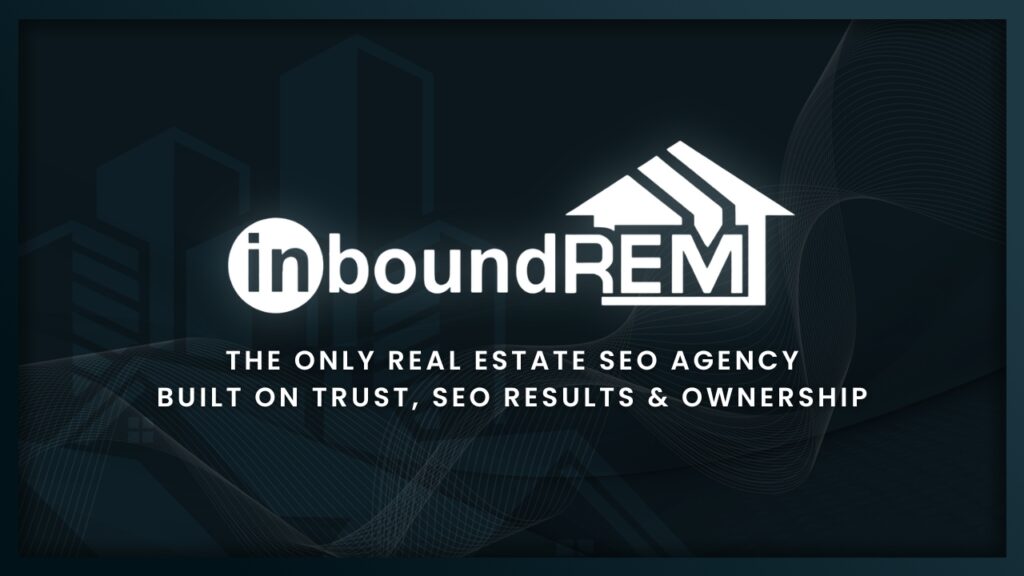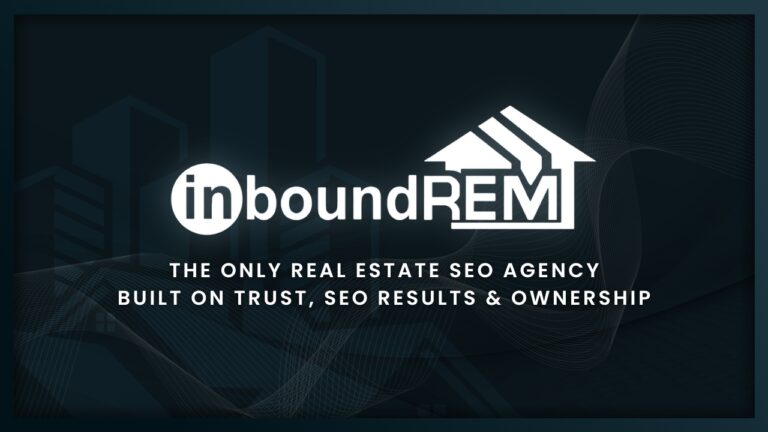Buying a home begins with a search bar. Long before a call or a walkthrough, people scroll through listings, compare streets, and weigh trade-offs from the sofa. In this crowded moment, content does the heavy lifting. It answers quiet questions, reduces risk, and turns casual interest into qualified intent. A clear plan gives every post, video, and guide a job to do. It builds familiarity, then trust. It helps buyers picture a life, not just a layout. With steady, useful communication, your brand earns attention for the right reasons and stays present when decisions are made.
The Shift in Consumer Behavior
Before reaching out to an agent, modern buyers often do their research. They want to browse listings, reviews, and neighborhood information from the comfort of their homes. This change in buyer behavior means that property firms need websites that are fast, reliable, and easy to navigate and help them build credibility by providing valuable content to attract clients.
Many agencies rely on WordPress to manage and showcase their listings. It’s easy to update listings, and the platform also supports multimedia content like photos and virtual tours. Choosing the best WordPress web hosting service ensures that pages load quickly and the interactive elements work seamlessly even when traffic spikes. When research feels effortless, visitors stay longer and engage and will feel more confident taking the next step to reach out.
Use of Content as a Trust-Building Tool
More often than not, a potential client will hesitate before making a substantial investment. Content marketing overcomes this reluctance by providing trustworthy content. Quality articles, videos, and infographics can provide answers, debunk myths, and properly calibrate expectations. Property professionals demonstrate their expertise and build confidence by providing consistent value.
Understanding the Audience
Start by asking the broadest possible questions of who the audience is and what they want from the proposal. The types of information required differ for homebuyers, investors, and renters. By customizing the material for each group, you can ensure that messages hit home, resulting in visitors spending longer on property listings and related resources.
Use Content Formats That Engage
Hold the viewers’ interest through visual tours, blog posts, and market updates. Virtual tours allow prospective buyers to envision themselves in the home, and neighborhood guides explain local amenities and schools. Investors seeking the next opportunity in the market are drawn to market analysis and trend reports. Diversifying formats helps maintain interest.
Storytelling
Making the process of buying or selling a home meaningful and essential is crucial. Adding a story to the property listing can help. A compelling message should accompany every listing, detailing the residents, their transformation, and their future plans. Creating authentic listings with a unique twist is crucial to capturing their attention.
Saying “this is such a good deal” is not enough to remember a house in a week. Adding a narrative drives the route that people follow in different ways.
Search Engine Optimization (SEO)
SEO is essential to be more visible. The primary tactic is to fulfill the request, for example, by matching the listing to a query about buying a home or making an investment, including headlines and meta descriptions that will be searched.
Ensure your strategy involves using tagged keywords, which are located in the title and at the beginning of the URL. Using a call-to-action description that has contact information or “learn more.”
Using Social Media
It is beneficial to incorporate photos or videos into social media posts. It makes the message more vibrant and distinct. You can:
- Live Stream: Showcase the house’s design or illustrate the situation.
- Social Specialization: Linking to Instagram and Snapchat to suit the target demographics, instead of LinkedIn.
- Regular Posts: Anything that needs to be done daily or weekly showcases the commitment and thoroughness.
Using Email Campaigns
Email is a vital tool for fostering meaningful relationships with customers. Redirect meaningful messages within the email based on where the customer has spent time on the site or made a query. The subject and goal of the email could be something such as new listings, changes in home prices, or the price of a house in the neighborhood.
Video Content
Carrying out a video shoot of all flower beds might be worthless, more like providing on-demand information. The process involves a naturalistic assessment of options, observations from interested buyers, and feedback from employees regarding specific areas of houses and farms.
Infographics and Data Visualization
Prospective buyers often overuse complex market data. Infographics simplify information into visually digestible material. Graphics detailing price trends, average days on the market, or mortgage options make it easy to arrive at a decision. Sharing visual data increases your inflow and establishes your agency as a reliable information source.
Mobile Optimization: Meeting Clients Where They Are
Mobile was responsible for the first step in most property searches. It is no longer a choice to see content properly on phones and tablets. Optimize for mobile, including a responsive design, fast loading times, and simple navigation. An easy platform keeps visitors on the site, reducing the risk of losing a customer.
User-Generated Content and Reviews
Reviews from past clients serve as social evidence. Testimonials or reviews from happy customers attract new prospects by instilling trustworthiness. If the product is in the form of photos or stories by the buyers, it makes it more authentic. The good words act as reassurance for anyone about to invest a significant amount of money in a new home or property.
Advice for Buyers and Sellers
Buying, selling, and financing guides can educate audiences at various stages of the process. Common questions, checklists, how-tos, and explainer videos work exceptionally well. By offering free, practical resources, you instill confidence in your expertise without charging a dime, and it encourages prospective clients to contact you for professional advice.
Local Insights Matter
Neighborhood data affects purchase decisions. Descriptive articles about schools, parks, transportation, and local attractions give readers an excellent sense of place.
Through an emphasis on community aspects, real estate pros align with buyers who are looking for something more than just a building, but rather a place to belong.
Interactive Tools and Calculators
Tools integrated into online articles (with significant return on investment potential), like mortgage calculators or affordability assessments, are good lead magnets. Visitors encounter experiences that resonate with their personal circumstances. Adding interactive features enhances the user experience, keeping users on the website longer and increasing the chances of contacting an agent or requesting additional information.
The Role of Analytics in Strategy
Evaluating engagement metrics helps determine which content works best in the future. Analytics sheds light on what work gets attention, how long visitors stay, and where traffic comes from. With this information, agencies can adjust their strategy to produce formats and topics that yield the highest return.
Collaborations and Guest Contributions
Spreading the news to the target audience by collaborating with local experts, influencers, or community leaders expands reach and coverage. Features of guest posts or interviews with industry pros offer helpful tips, new ideas, and insights. Screen time partnerships signify an invested interest in community engagement and add depth to the content portfolio.
Event Promotion and Coverage
Open houses, seminars, and community events generate interest and foot traffic. Blog posts, newsletters, and social media promotion can generate buzz around these events. Communication can continue beyond the event when highlights are shared, demonstrating engagement and providing avenues for extended outreach.
Measuring Success and Adapting
Measuring progress with well-defined benchmarks ensures continuous progress. What works is indicated by website visits, leads generated, social shares, and conversion rates. Now, proptech firms can conduct regular reviews to refine their strategies and expand on those that yield the maximum return on investment (ROI).
The Value of Authenticity
As property managers and marketers, honesty and transparency should always play a significant role. It is essential to provide a credible representation of both the listings and the services offered. Being truthful in claims and visuals builds lasting trust. However, by communicating openly and honestly, you can build relationships that last as long as your business or clients want to remain in the market, which means repeat business and recommendations.
Challenges in Creating Compelling Content
To stand out in a crowded market, you need to be original and persistent. It can be challenging to develop new concepts while maintaining accuracy and precision. These difficulties are overcome by staying in touch with the preferences and trends of every audience in your industry. This approach provides flexibility and fosters continuous learning, keeping the content relevant and engaging.
Content in Property Marketing: A Future Perspective
Innovations such as virtual reality tours and AI-based recommendations are transforming the way the industry operates. These innovations introduce a new dimension of interactivity and a huge boost in efficiency to the property search process. By keeping abreast of any new developments in this area, property professionals can ensure that they are equipped to put into practice the best strategies and remain ahead of the game.
Integrating Offline and Online Efforts
This technique complements traditional sales skills. A strong online presence complements printed materials, networking events, and physical meetings. All communication requires uniformity, as it must create a unified report that enforces the actual feel across all touchpoints—from research to transaction.
Building a Recognizable Brand
Agencies that have spent time and money building their brand identity are in a class of their own. A unified message, visuals, and tone leave a lasting impression. In the long run, a good brand will draw followers and recommendations. Reputation and visibility reward branding investments, and careful content should subsume them.
Conclusion
Real estate and content marketing strategies intertwine when considering how people search, research, and make decisions about a property. Focusing specifically on compelling, pertinent, and helpful content helps agencies establish trust and foster meaningful relationships. The key to winning is to commit to improving, innovating, and connecting—to make a lasting mark in a digitally led world.




